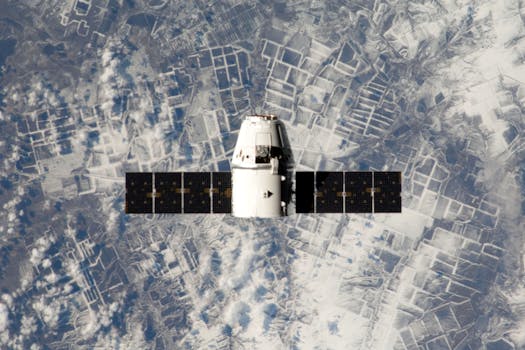From Geostationary to Low Earth Orbit: The Evolution of Satellite Telecommunications in 2023
The satellite telecommunications industry has undergone significant transformations in recent years, with a shift from geostationary to low Earth orbit satellites. This evolution has enabled faster, more reliable, and cost-effective communication services, revolutionizing the way we connect and communicate.

From Geostationary to Low Earth Orbit: The Evolution of Satellite Telecommunications in 2023
Satellite Telecommunications has become an essential part of our daily lives, enabling global communication, navigation, and remote sensing. The industry has witnessed significant advancements in recent years, with a notable shift from geostationary to low Earth orbit satellites. This evolution has transformed the way we connect and communicate, offering faster, more reliable, and cost-effective services.
The traditional geostationary satellites, which orbit the Earth at an altitude of approximately 36,000 kilometers, have been the backbone of the satellite telecommunications industry for decades. However, these satellites have several limitations, including high latency, limited bandwidth, and high operational costs. The shift to low Earth orbit satellites, which orbit the Earth at an altitude of around 160-2,000 kilometers, has addressed these limitations, enabling the provision of high-speed, low-latency, and cost-effective communication services.
The Benefits of Low Earth Orbit Satellites
Low Earth orbit satellites offer several benefits over traditional geostationary satellites. One of the primary advantages is reduced latency, which is critical for real-time communication applications such as video conferencing, online gaming, and virtual reality. Low Earth orbit satellites also offer higher bandwidth, enabling the transmission of large amounts of data, including high-definition video and audio.
Another significant benefit of low Earth orbit satellites is their lower operational costs. These satellites require less power to operate, which reduces the cost of launching and maintaining them. Additionally, low Earth orbit satellites have a shorter lifespan, which allows for more frequent upgrades and innovations, driving the development of new technologies and services.
Applications of Low Earth Orbit Satellites
Low Earth orbit satellites have a wide range of applications, including satellite broadband, Earth observation, and navigation. Satellite broadband services, such as those offered by companies like SpaceX and Amazon, provide high-speed internet connectivity to remote and underserved communities, bridging the digital divide and enabling access to essential services like education, healthcare, and finance.
Earth observation satellites, which orbit the Earth at low altitudes, provide high-resolution images and data, enabling applications such as environmental monitoring, crop monitoring, and disaster response. Navigation satellites, such as the Global Positioning System (GPS), provide location information and timing signals, enabling accurate navigation and positioning.
Challenges and Future Developments
Despite the benefits and applications of low Earth orbit satellites, there are several challenges that need to be addressed. One of the primary concerns is the increasing congestion in low Earth orbit, which can lead to collisions and interference between satellites. Regulatory frameworks and industry standards are being developed to address these concerns and ensure the sustainable development of the low Earth orbit satellite industry.
Future developments in the satellite telecommunications industry are expected to focus on the integration of low Earth orbit satellites with other technologies, such as 5G and the Internet of Things (IoT). The development of new satellite constellations, such as the SpaceX Starlink and Amazon Kuiper Systems, is expected to drive innovation and growth in the industry, enabling new applications and services that will transform the way we connect and communicate.



